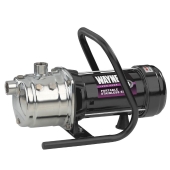
 2
2




 5
5




'Theoretically this level of creeping Orwellian dynamics should ramp up our awareness, but what happens instead is that each alert becomes less and less effective because we're incredibly stupid.' - Jerry Holkins
 3
3








“It’s said war—war never changes. Men do, through the roads they walk. And this road—has reached its end.”





"Never doubt that a small group of thoughtful, committed citizens can change the world; indeed, it's the only thing that ever has."-Margaret Mead "The only thing worse than being blind, is having sight but no vision."-Helen Keller




Silence is Golden
For all your RMH needs:
dragontechrmh.com










 1
1




This much I can also confirm. How high up do you pump the water, Gerry? The biggest issue with the OP, I think, is going to be the extreme height that he is wanting to pump to.always found that the lower we keep it, the faster it can prime itself and also not have as much atmospheric pressure to overcome.
"Never doubt that a small group of thoughtful, committed citizens can change the world; indeed, it's the only thing that ever has."-Margaret Mead "The only thing worse than being blind, is having sight but no vision."-Helen Keller
 2
2




Silence is Golden
For all your RMH needs:
dragontechrmh.com














very true. I was assuming vertical.I wonder if the 1600' is distance is elevation vertically or the slope distance. Would make a big difference.
"Never doubt that a small group of thoughtful, committed citizens can change the world; indeed, it's the only thing that ever has."-Margaret Mead "The only thing worse than being blind, is having sight but no vision."-Helen Keller




Iterations are fine, we don't have to be perfect
My 2nd Location:Florida HardinessZone:10 AHS:10 GDD:8500 Rainfall:2in/mth winter, 8in/mth summer, Soil:Sand pH8 Flat





|
What we've got here is a failure to communicate. The solution is in this tiny ad:
Rocket Mass Heater Resources Wiki
https://permies.com/w/rmh-resources
|




